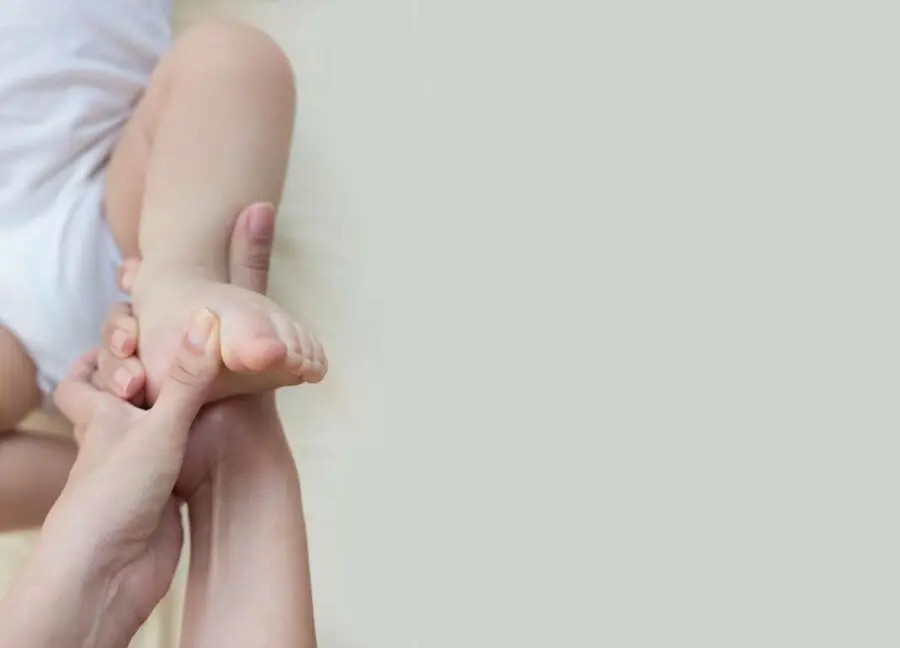
Clubfoot is either a congenital malformation or a prenatal deformity that develops during the child’s development.
The so-called idiopathic clubfoot affects the structures of the foot directly, despite the fact that it is normally well-managed. As a result, it is likely to repeat on a regular basis.
It’s thus critical to keep an eye out for signs of recurrence including overpronation, postural issues, and even difficulty learning to walk.
All of the information you’ll need to understand more about clubfoot is provided below.
Types of clubfoot and related conditions
Idiopathic clubfoot and positional clubfoot are the two of the most common kinds of clubfoot.
Idiopathic clubfoot is a real congenital deformity of the foot that affects the surrounding musculoskeletal tissues, with a strong hereditary component in some cases.
Positional clubfoot, on the other hand, is not genuinely malformed. The infant’s foot is retained in an odd posture during its growth in the womb, which causes this condition.
Idiopathic clubfoot has traits that are similar to those of other foot malformations in children, such as
- Varus foot;
- The adductus metatarsus.
Some symptoms are prone to reappear from one condition to the next.
As a result, it’s critical to consult with your podiatrist or treating physician to rule out alternative possibilities.
Clubfoot symptoms
A child’s clubfoot does not cause pain at birth.
It can, however, cause musculoskeletal issues, trouble learning to walk, and possibly discomfort during and after growing if not addressed properly.
Before treatment, idiopathic clubfoot causes symptoms such as:
- A foot that appears to be more deformed than a newborn’s regular foot;
- An Achilles tendon that has been constricted or shortened;
- An inward-turning forefoot;
- Downward pointing toes;
- A foot that rests on the outside of its toes;
- Increased foot stiffness.
Diagnosing clubfoot
An ultrasound can usually detect the existence of clubfoot as early as the second month of pregnancy.
If there is any ambiguity about the nature of the foot deformity after the infant is born, the podiatrist can clarify the condition with additional examinations.
The biomechanical exam is one of the tests used next. The foot is functionally and visually examined, and its mobility is assessed, using this diagnostic approach.
Causes and aggravating factors
The primary cause of clubfoot is still unknown.
Some children, however, are at a higher risk of contracting it than others.
The following variables make having clubfoot(s) more likely:
- Gender: boys are twice as likely to have clubfoot.
- Heredity: If a close family member had clubfoot in the past, the newborn may be more at risk.
- Smoking: The percentage of clubfoot is thought to be higher in children whose mothers smoked during pregnancy.
- An extraneous condition: Spina bifida and Larsen syndrome are both conditions that can deform the feet in a similar way. However, this clubfoot is not considered idiopathic.
Clubfoot prevention
It is practically hard to avoid clubfoot because it develops before a child is born.
As a result, there are no preventive methods against clubfoot other than regular observation of the foot’s development and the child’s growth.
Treatments to correct clubfoot
Because clubfoot is a congenital condition, treatment options include surgery and the use of various orthopedic devices.
In any case, this plantar condition must be handled from the child’s early weeks of life, and it necessitates the assistance of a number of medical professionals.
In general, the treatment is divided into three stages:
- Casting of the affected foot: this phase of treatment is best done in the first weeks of the child’s life.
- Achilles tendon tenotomy: This surgical procedure straightens the heel and tendon and makes the foot more flexible.
Wearing ankle shoes with stays: these are worn towards the end of treatment to keep the feet from deforming again. It is recommended that they be worn until the child takes their first steps.
PiedReseau – Learn more
Are you interested in learning more about the idiopathic clubfoot? We regularly produce articles about children’s foot deformities!
Even though our website provides a wealth of information, nothing matches a face-to-face consultation with a PiedReseau podiatrist.
Take care of your feet, they’re precious!